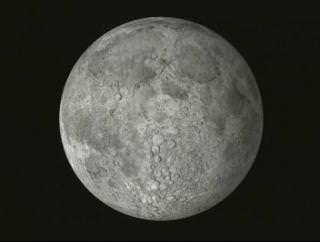The rotation of the Moon is a strange situation. It takes the same amount of time for the Moon to complete a full orbit around the Earth as it takes for it to complete one rotation on its axis. In other words, the Moon rotation time is 27.3 days, just the same as its orbital time: 27.3 days.
What this means to us here on Earth is that the Moon always presents the same face to the Earth. We only see one side of the Moon, and not the other. And if you could stand on the surface of the Moon, the Earth would appear to just hang in the sky, not moving anywhere.
Astronomers say that the Moon is tidally locked to the Earth. At some point in the past, it did have a different rotation rate from its orbital period. But slight differences in the shape of the Moon caused the Moon to experience different amounts of gravity depending on its position. These differences acted as a brake, slowing the Moon rotation speed down until it matched its orbital period. There are other tidally locked moons in the Solar System. Pluto and its moon Charon are tidally locked to each other, so they always present the same face to one another.
We’ve written many articles about rotation for Universe Today. Here’s an article about the rotation of the Earth, and here’s an article about the rotation of Saturn.
If you’d like more info on the Moon, check out NASA’s Solar System Exploration Guide on the Moon, and here’s a link to NASA’s Lunar and Planetary Science page.
We’ve also recorded an episode of Astronomy Cast all about the Moon. Listen here, Episode 113: The Moon, Part 1.

